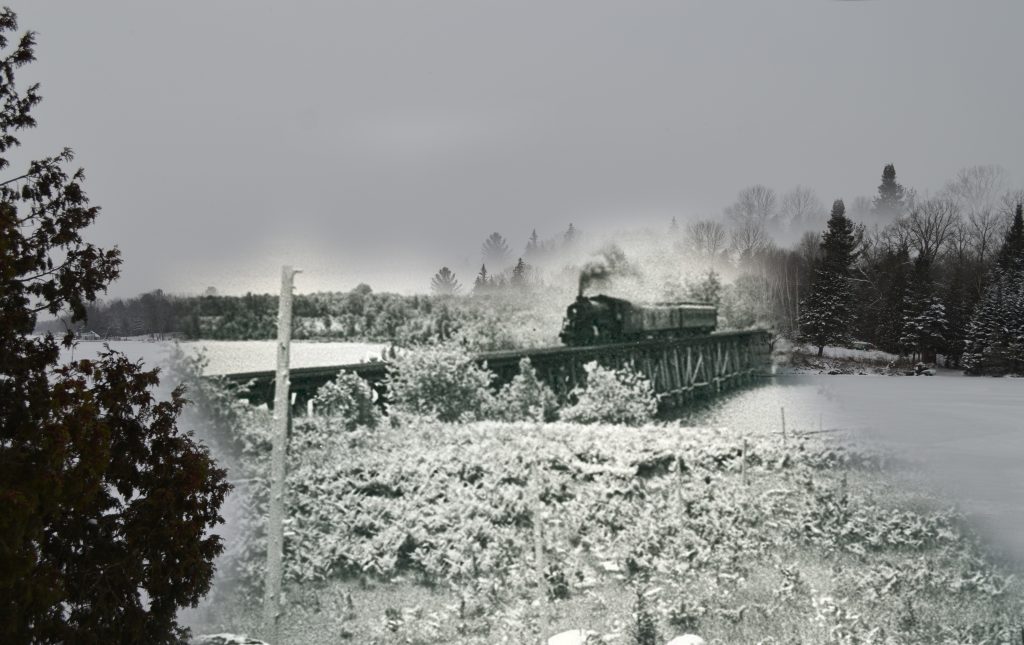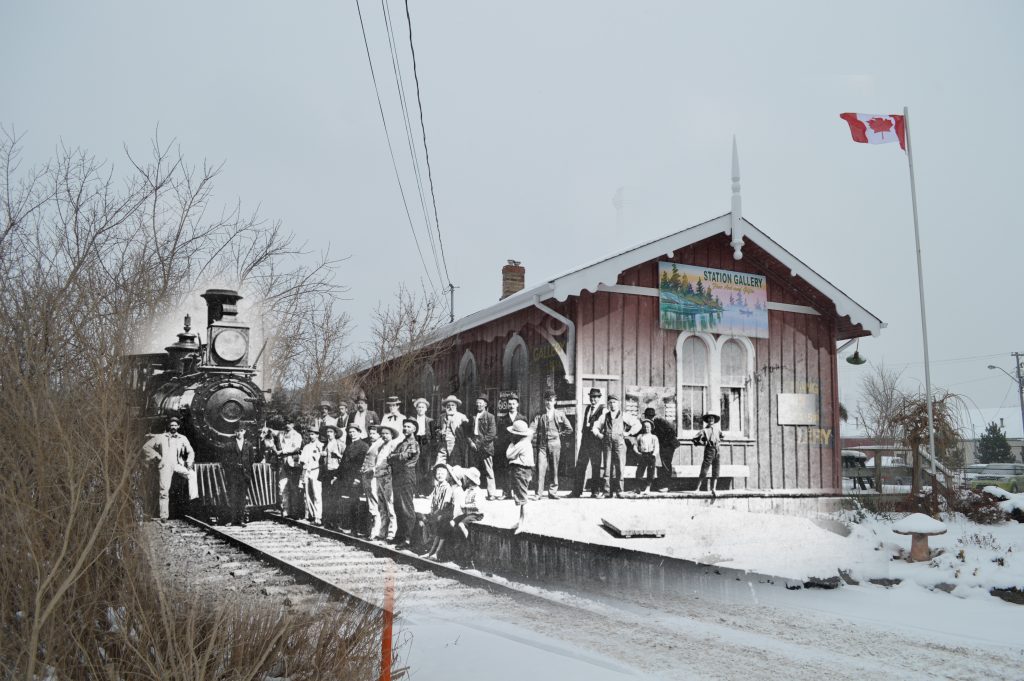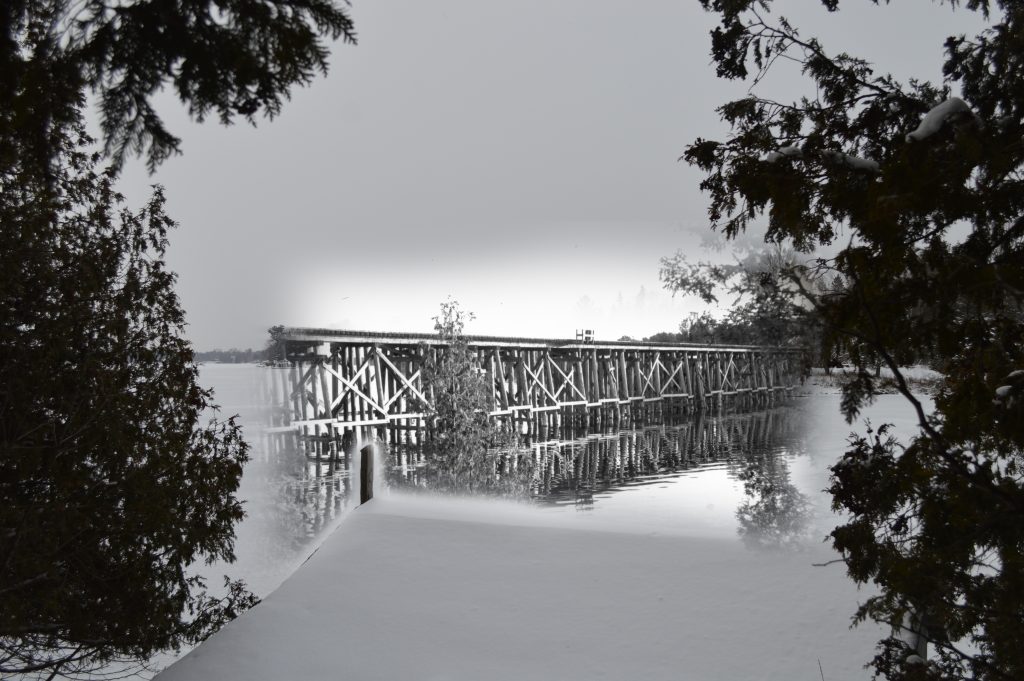Connecting the Backwoods
When the first European immigrants arrived, the backwoods were very isolated from the outside world. Summer or winter the waterway was the most practical means of transportation and the upper Kawarthas were about a two day journey from Peterborough. Many travelers carried an axe for roadwork on portages and early roads. Most roads were just a swath through the forest with the stumps cut low enough that an oxcart axle could pass, and in muddy seasons everything mired.

Locomotive crossing Balsam Lake (Original photograph: date unknown combined with modern photograph: 2017)
From the moment that railways became viable, every community sought to be connected, and many paid large bonuses to ensure that railway companies located a station in their town. Railway construction was a Herculean task in the era of muscle power, especially in clearing and grading land. Railways provided the means for farm and industrial produce to reach distant markets. This made exports practical, particularly forest produce, and imports of industrial wares from elsewhere. Gone were the days when settlers carried bags of grain twenty or thirty miles on their backs to have it ground to flour.

A later picture of a train on the North Bay Trestle (Original photograph: 1961 combined with modern photograph: 2017)
A modern, connected transportation network of railways and canals allowed the region to specialize. The Kawarthas became a major tourist destination, and ever since, this has been a pillar of the local economy. Locals produced a great variety of wooden-wares: lumber, tanbark, wood alcohol, children’s toys and furniture. It also allowed farms to specialize, moving beyond subsistence focused farms and allowing families a little more cash income.
Modern photography and image combining: Sharon Johnson.
Copyright: Maryboro Lodge.



